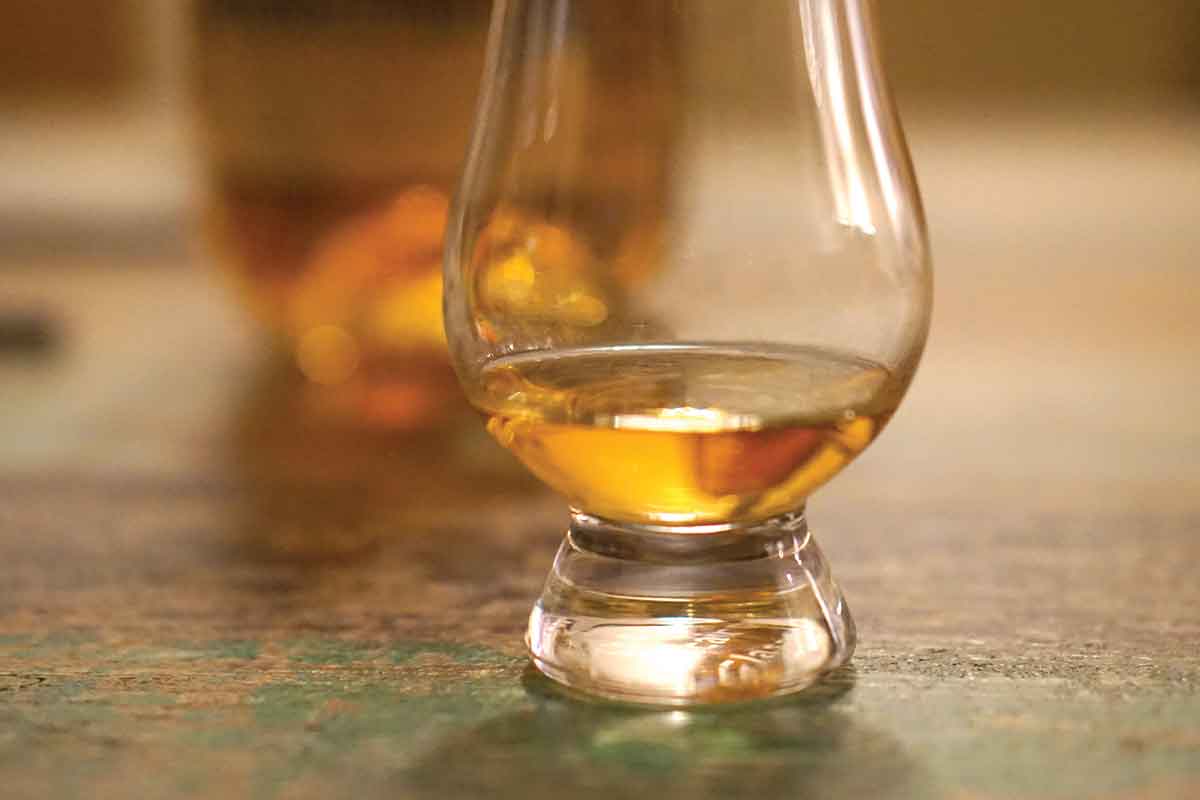Distiller’s Irish Whiskey Guide: Styles, Brands, Rules and Myths
By Stephanie MorenoAs we’ve covered previously, there has been a huge increase in the number of Irish whiskey distilleries in recent years. Many of those new producers are beginning to have whiskeys reach full maturity, so naturally the number of new products is increasing as well. This means the next time you visit your local shop you’ll be certain to see some new labels next to your old favorites. But before you stock up, it’s a good idea to brush up on the basics with our Irish whiskey guide to get you prepared for your next purchase.
The first thing to cover in our guide are the different styles of Irish whiskey. These include single malt, single pot still, single grain and blended whiskey. Before we get into the specifics of each style, there are some things that they all have in common. For example, all Irish whiskey must be distilled and aged on the island of Ireland. Also, the aging requirement is a minimum of 3 years in wooden containers no larger than 700L. Also, Irish whiskey cannot be bottled below 40% ABV.
One other thing to know is that many of the Irish whiskey brands make more than one style of Irish whiskey. For example, Teeling Distillery which opened its doors in 2015 makes all four styles of Irish whiskey. And even a classic brand like Powers, known primarily for its blended whiskey, has some single pot still whiskeys under its banner. Therefore it’s important to pay attention to not only the brand, but the style on the label.
Single Malt
Made using 100% malted barley, Irish single malt whiskey is distilled at one (hence the word “single”) distillery. The distillation occurs in batches in a traditional pot still.

While Irish blends definitely take up the lion’s share of the shelf space, Irish single malt whiskey is a category worth exploring. Bushmills is the granddaddy of them all with some notable age statement expressions in their portfolio including a 21-year-old. Other notable single malt brands include Knappogue Castle and Dingle Distillery which recently released its flagship single malt bottling in the US.
Single Pot Still
Single pot still whiskey is a whiskey style that is unique to Ireland. Like Irish single malt whiskey, it also must be distilled at a single distillery in Ireland using traditional pot stills. But here the grain make up is a mix of both malted and unmalted barley. There is also a requirement that at least 30% of both malted and unmalted barley be used.
Additionally, other grains are allowed to be used, but it’s not required. If used, those other grains can only be 5% of the grain recipe. Oats or wheat are common ingredients. You may find older labels with the terms “pure pot still” or “pot still” displayed.
Brands you may be familiar with include Redbreast and the Spot Whiskeys (Green, Yellow, Red, and Blue), all made at the New Midleton Distillery in Cork. But newer brands such as Glendalough, Drumshanbo and Writers’ Tears are making this style as well.
Single Grain
Again, the “single” here is referring to the number of distilleries, not the number of grains used. A mix of malted or unmalted grains can be used, most commonly barley, wheat, rye, and corn/maize. There isn’t a requirement for the type of stills used, but continuous column stills are the standard. This is a relatively quick and inexpensive method of production and Irish single grain whiskeys are often light and young.
This style is often used in the production of blended whiskeys, but occasionally you’ll find single grain whiskeys on the market. Look for bottlings from Teeling and Method and Madness which is Midleton’s new experimental micro-distillery.
Blended Whiskey
In Ireland, blended whiskeys are made by blending two or more of the aforementioned styles of whiskey — single malt, single grain, and/or single pot still. Of course we have to mention the biggest Irish whiskey blend of them all — Jameson. It’s made with grain and single pot still whiskeys. But other notable blended brands include Midleton Very Rare, and newcomers like Proper No. 12 and Roe & Co. Notably, Tullamore D.E.W. uses all three styles in their blends.
Also of note, there are some examples of blends made with no grain whiskey. The Irishman uses a mix of single malts and single pot still whiskeys for its Harvest (formerly known as Founder’s Reserve) and its annual Cask Strength bottlings.
Irish Whiskey Myths
Of course no Irish whiskey guide would be complete without dispelling a few myths that just won’t die.
All Irish whiskeys are triple-distilled — false!
While there are many examples of triple-distilled Irish whiskeys, this is not a requirement. Double distilled Irish whiskeys include Tyrconnell Single Malt and Kilbeggan Blended Irish Whiskey.
Peated whiskeys are only made in Scotland — also false!
It’s not a common occurrence, but there are a few peated Irish whiskey brands on the market today. Until recently, Connemara was the lone brand in the game (they also double distill). However, Teeling entered the peated whiskey conversation with their Blackpitts bottling. Meanwhile, Waterford is not only exploring the idea of Irish-grown barley, but also Irish-grown peat as well. Look for the recently launched Fenniscourt and Ballybannon.
Irish whiskey is only good for drinking shots — laughably false!
Okay so yes, for a lot of folks including yours truly, their first introduction to Irish whiskey was via a shot. But (as has just been laid out for you in detail) there is a wide range of styles and flavors to be found in Irish whiskey that you’d miss if you’re only drinking shots. There are some Irish whiskeys that are in excess of 10 years-old and a few in the 25+ range, each of them worthy of a sip and savor moment. Also, barrel experimentation has made its way to the Emerald Isle so you’ll find Irish whiskeys aged in all sorts of barrels like Irish or Japanese oak or even ex-mezcal casks. And we haven’t even mentioned the Irish whiskey cocktails you’d be missing. Do yourself a favor and explore the country a dram at a time.
How to Find Your Perfect Irish Whiskey Bottle
Filtering by category in the Distiller app allows you to assess all of your Irish whiskey options. Plus when you upgrade to Distiller Pro you can scan bottles on the go to quickly browse reviews, flavor profiles and more. As an exclusive article discount we’re giving you a free trial month when you use code ‘ARC6’ at checkout.
Discover flavor profiles, read reviews, add your favorites to lists and more! Download here.
With Distiller, you’ll always know what’s in the bottle before you spend a cent. Rate, Review and Discover spirits! Head on over to Distiller, or download the app for iOS and Android today!



